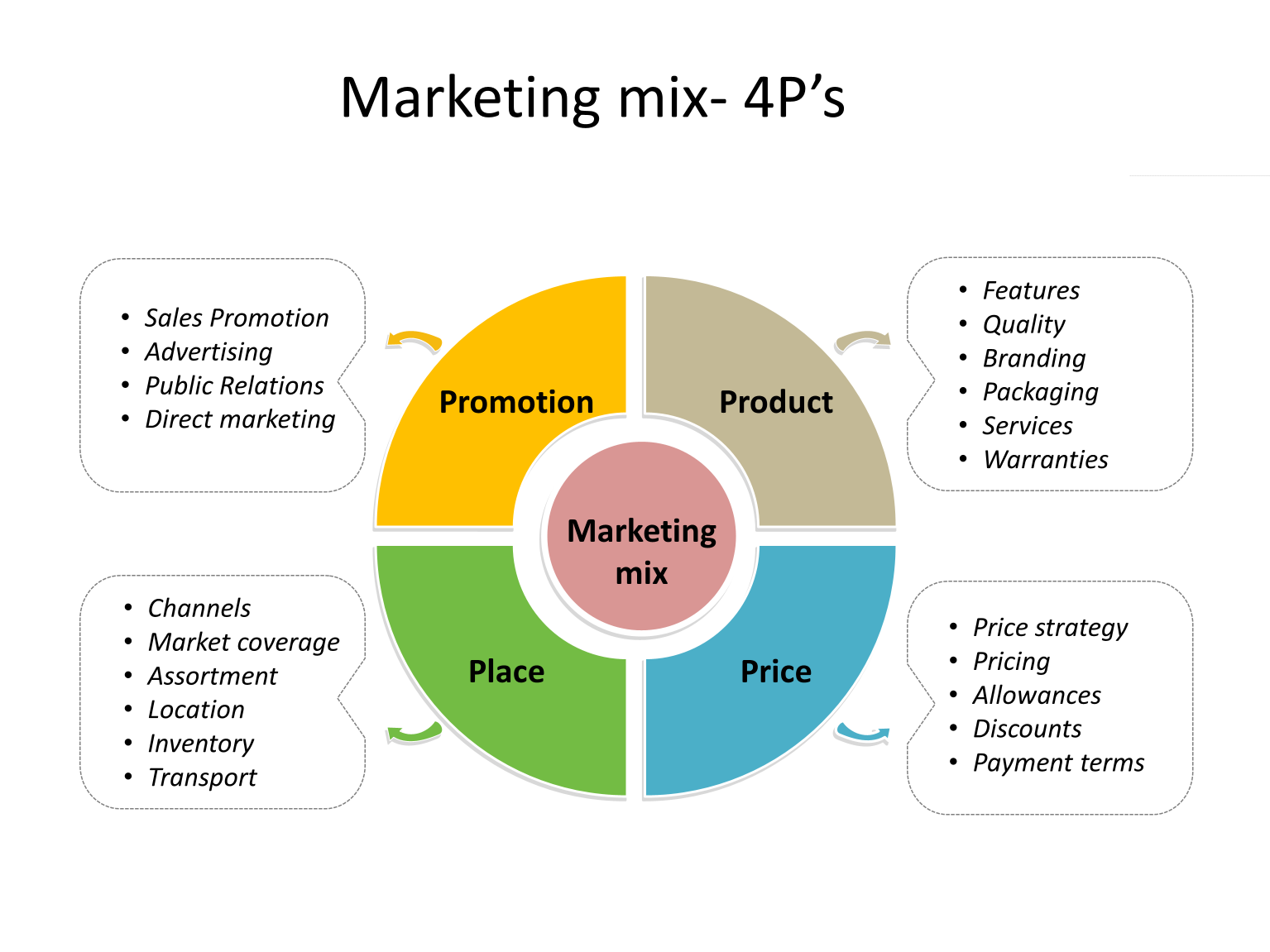Marketing mix refers to the set of marketing tools
It enables businesses to develop a comprehensive approach to marketing and tailor their strategies to their products, target audience, and competition.
Marketing mix refers to the set of marketing tools and tactics that businesses use to promote their products and services to their target audience. Also known as the Four Ps of marketing, the marketing mix comprises product, price, promotion, and place. The concept of marketing mix was introduced by Neil Borden, a marketing professor at Harvard Business School, in 1949. The marketing mix has since been a core component of marketing strategy, and its importance has grown with the expansion of businesses and markets around the world.

The Four Ps of marketing mix are Product, Price, Promotion, and Place. Each of these elements plays a critical role in the success of any marketing campaign.
Product: This element of the marketing mix refers to the tangible or intangible item that the business is selling. It includes the features, quality, packaging, design, brand, and any additional services that come with the product. Companies need to identify the unique selling point (USP) of their products and focus on differentiating their product from the competition. The product must meet the needs of the target market, and the marketing message should clearly communicate how the product solves their problems.
Price: Price is the amount that the customer has to pay for the product or service. Pricing strategies vary depending on the product, competition, and target audience. Pricing strategies may include penetration pricing, premium pricing, value-based pricing, and psychological pricing. It is essential to ensure that the pricing is in line with the perceived value of the product and the target audience’s ability to pay.
Promotion: Promotion refers to the methods used to communicate the value of the product to the target audience. This includes advertising, sales promotions, public relations, and personal selling. The message should be tailored to the target audience and convey how the product solves their problems. Promotions should be timed effectively and delivered through the most appropriate channels.
Place: Place refers to the distribution channels through which the product is sold. This includes the physical location, online sales platforms, and third-party distributors. It is essential to ensure that the product is available where the target audience shops, and the distribution channels are optimized to maximize sales.
In addition to the Four Ps, there are three additional Ps that are sometimes added to the marketing mix. These are people, process, and physical evidence. These additional elements are critical to service-based businesses.
People: People refer to the employees of the business, including the management, sales team, and customer service representatives. Businesses must ensure that their employees are trained to deliver high-quality customer service and represent the brand effectively.
Process: Process refers to the system used to deliver the product or service to the customer. This includes the ordering process, delivery, and after-sales support. The process should be efficient, streamlined, and optimized to maximize customer satisfaction.
Physical evidence: Physical evidence refers to the tangible items that customers can use to evaluate the quality of the product or service. This includes the packaging, branding, and any marketing materials. Physical evidence should be consistent with the brand image and convey the quality of the product or service.
The marketing mix is a powerful tool for businesses to develop a comprehensive marketing strategy. It enables businesses to analyze their products, target audience, competition, and distribution channels and develop a tailored approach to marketing. However, businesses must ensure that all elements of the marketing mix work together cohesively and are optimized to maximize the impact of the marketing campaign.
In conclusion, the marketing mix is a crucial component of any successful marketing campaign. It enables businesses to develop a comprehensive approach to marketing and tailor their strategies to their products, target audience, and competition. The Four Ps of marketing mix - product, price, promotion, and place - are the core components of marketing strategy. However, service-based businesses may also need to consider the additional Ps of people, process, and physical evidence. By carefully considering each element of the marketing mix, businesses can develop a cohesive and effective marketing campaign that resonates with their target audience and drives sales.
It is also essential to remember that the marketing mix is not a one-time solution but requires continuous monitoring and adjustment. As businesses evolve, their marketing strategies must evolve as well. Regular monitoring and analysis of the marketing mix can help businesses identify areas for improvement and make necessary adjustments to maximize their marketing impact.
Another important consideration when developing a marketing mix is ethical marketing practices. Businesses must ensure that their marketing strategies are honest and transparent, and do not mislead or deceive customers. Ethical marketing practices build trust and credibility with customers, which is essential for long-term success.
In conclusion, the marketing mix is a powerful tool for businesses to develop effective marketing strategies. By carefully considering each element of the marketing mix, businesses can develop a tailored approach to marketing that resonates with their target audience and drives sales. Regular monitoring and adjustment of the marketing mix can help businesses stay competitive and adapt to changes in the market. Ethical marketing practices are essential for building trust and credibility with customers and ensuring long-term success.